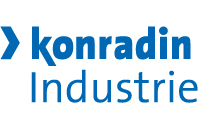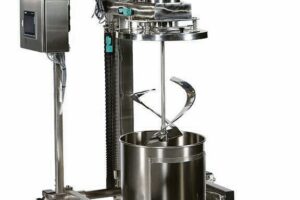Vision Zero’s top priority is to prevent fatal and serious accidents at work and occupational illnesses. A fundamental assumption here is that people make mistakes. Consequently, systems must be designed in such a way that these errors do not lead to life-threatening injuries or illnesses. If this principle is applied to chemical process engineering, the focus shifts to hazardous materials in particular, which can cause considerable damage to employees’ health. Nonetheless, hazardous substances are not solely deemed a hazard in the workplace. Many of these substances can have a significant impact on the surrounding area and the environment in the event of an accident or release. The extension of Vision Zero to environmental protection and the protection of the public therefore forms the basis for a comprehensive prevention concept for companies in the chemical industry when dealing with hazardous materials.
Legal requirements
The safe handling of hazardous materials is closely linked to the applicable legal framework and standards. In Germany, there are numerous requirements from various legal areas such as environmental law, chemicals law and public building law in addition to occupational health and safety law. The Water Resources Act (WHG) defines the requirements for handling substances hazardous to water and the Ordinance on Installations for the Handling of Substances Hazardous to Water (AwSV) specifies these requirements by stipulating how such substances must be stored, transported and processed to prevent water damage. This includes measures such as the installation of containment facilities, compliance with minimum distances to bodies of water and the preparation of risk assessments. The AwSV applies in particular to facilities in which large quantities of substances hazardous to water are present.
The TRGS 510 (Technical Rules for Hazardous Substances 510) reflect the state of the art in Germany for the storage of hazardous materials in transportable containers and concretize the requirements of the Hazardous Substances Ordinance (GefStoffV) within their scope of application. Transportable containers, such as canisters, drums and IBCs, are defined as containers that are not permanently mounted or installed and can be transported.
A hazardous substance storage facility is a structural measure and is generally subject to planning permission. An increased risk of fire is mainly assumed, particularly in the case of hazardous substance storage facilities for flammable substances. For this reason, the hazardous materials storage facility is categorized as a special building, which entails stricter requirements for the building permit. Comprehensive fire protection planning, including a property-specific fire protection concept, is required and must be verified during the approval process.
Safety cabinet or container
Safety storage cabinets enable the safe storage of limited quantities of hazardous materials (under 200 kg) inside buildings. They are suitable for the storage of all types of liquid and solid hazardous materials, as well as for pressurized gas cartridges and aerosol dispensers in accordance with TRGS 510. The use of safety cabinets automatically fulfils the protective measures in accordance with sections 5–12 of TRGS 510. DENIOS offers safety cabinets such as the fire-resistant Select W-123 hazardous material cabinet as well as larger containerized hazardous material storage units. These are used when the storage quantity exceeds the capacity of safety storage cabinets. They are suitable for the safe storage of liquid and solid hazardous materials, pressurized gas cartridges and aerosol dispensers in accordance with the guidelines of TRGS 510 and can be set up both inside buildings and outdoors. One example is the BS (Basic Store) hazardous materials storage system. The shelving construction is available in two sizes and has an integrated spill tray so that water-polluting substances such as oils or acids can be stored safely. The application procedure for a general building authority approval is currently being carried out by the German Institute for Building Technology (DIBt). The uninsulated hazardous substance storage facility BS is designed for the mixed storage of up to 32 drums or 8 IBCs; a slightly sloping roof prevents the accumulation of rainwater.
Fire and explosion protection
For the storage of flammable substances, hazardous materials storage facilities must have appropriate fire protection measures. DENIOS offers hazardous materials storage systems with a fire protection design in accordance with REI 90 or REI 120. The approval includes comprehensive fire protection tests, the passing of which has been confirmed by an independent testing institute. The fire protection storage systems can be designed and equipped for any requirement — regardless of where in the world they are to be used. Internationally, fire resistance of up to 120 minutes is possible — tested and certified as a complete system. The WFP-X 22 fire protection storage system, for example, is a walk-in hazardous materials storage system for small containers and 200-litre drums for the safe storage, transfer, or removal of flammable and water-polluting substances. Thanks to its double-frame construction, the warehouse offers safe F90 fire protection from the inside and outside. Lockable, self-closing EI-90-C fire doors provide additional protection for the contents of the storage facility. Fire bulkheads and aerosol extinguishing systems, as well as other fire protection accessories, are also available for the walk-in WFP warehouses.
Explosion protection measures go beyond pure fire protection measures. In addition to earthing devices, an explosion-proof transmitter for the detection of flammable gases and vapours is available for fire protection storage systems in the WFP product family. It is also possible to extract hazardous gases and vapours from the warehouse.
Monitoring and control
Regular monitoring of compliance with safety standards and the identification of potential for improvement are key components of Vision Zero. The utilization of contemporary technologies, such as sensors, monitoring systems, and digital platforms, can aid safety managers in the effective monitoring of hazardous materials. These technologies provide real-time monitoring, early warning systems, and data analysis to identify potential risks at an early stage.
Denios
Achema: Hall 4.0, Stand J8








